05
PRODUCT DESIGN / 3D MODEL
U-LOCK U-LIGHT
CLIENT
PERIOD
ROLES
TOOLS
NYU SEMESTER PROJECT
JAN 2019 - MAR 2019
RESEARCH, DESIGN, PROTOTYPING, 3D MODEL
SKETCH, SIEMENS SOLID EDGE, ARDUINO IDE, HAND TOOLS
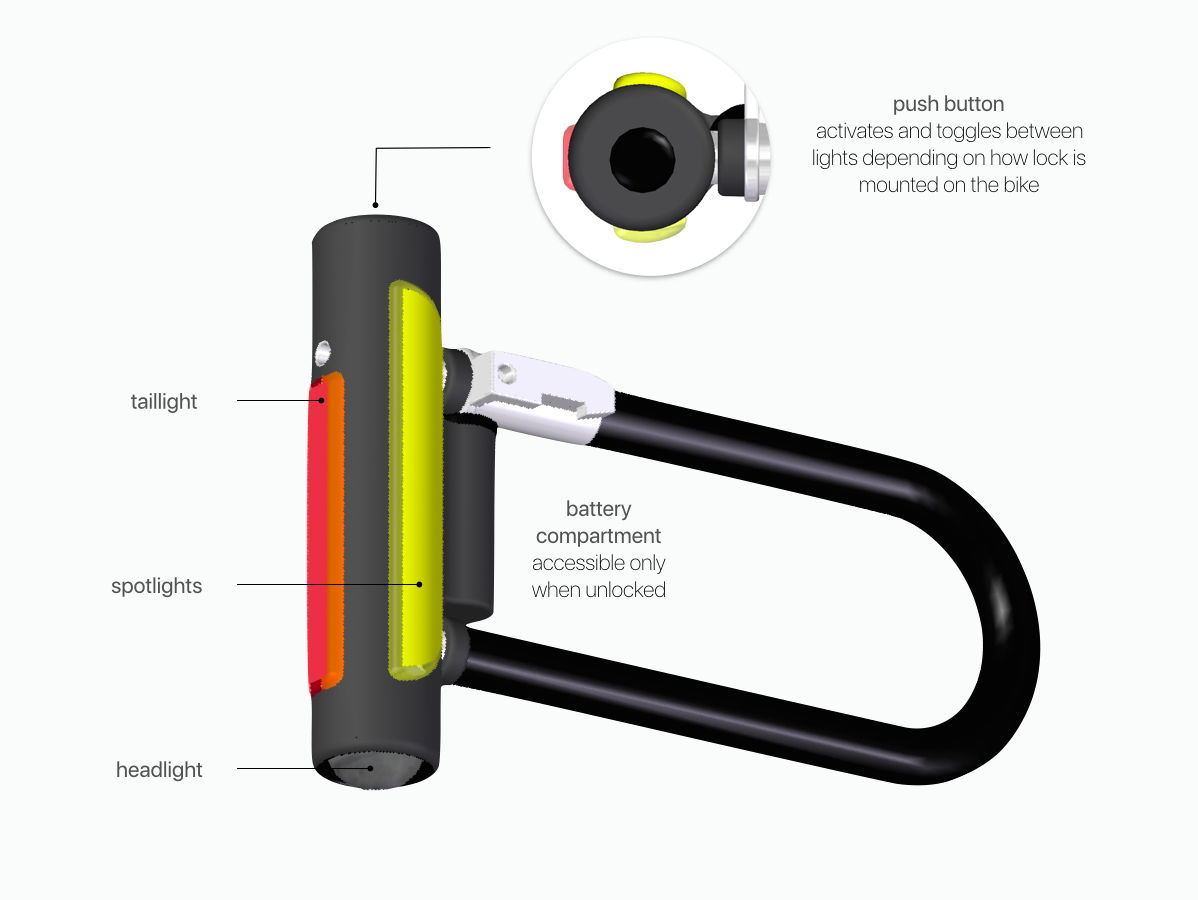
Overview
U-Lock U-Light helps cyclists be more visible and safe on the road. This bike lock features a headlight, taillight, and downward facing spotlights all in one, allowing cyclists to combine lights according to how they mount their bike lock.
I had the pleasure of working with team members Elizabeth Ferguson, Jaekook Han, and Timothy Lobiak on product development as part of a 6-week intensive course titled “Product Design: Designing for People” taught by Inna Lobel at New York University.
Context & Research
Tasked with designing around the theme of Urban Mobility, we chose to define problems and opportunity spaces associated with bicycling. Although bicycling is second nature for most, it is hardly the first choice of transportation in urban environments.
But why?
We used the following strategies to establish a baseline knowledge of cycling in New York City—
- Method Acting: I don’t own a bicycle, but I rented a Citibike for a day to experience it first-hand. The experience was eye-opening and helped me articulate and defend my reasons for choosing other methods of transport during group discussions.
- Introspection & Assumptions: As a group, we reflected on what we already knew about the pros and cons of biking in the city and
compared our experiences to see if they overlapped.
- Provocations: We inverted our typical assumptions about bicycling to activate our lateral thinking during brainstorm sessions. For example, I declared on a Post-It note, “Biking is optimal for the worst weather conditions”. Although this statement could not be farther from the truth, it provided a thought-provoking starting point for our design research.
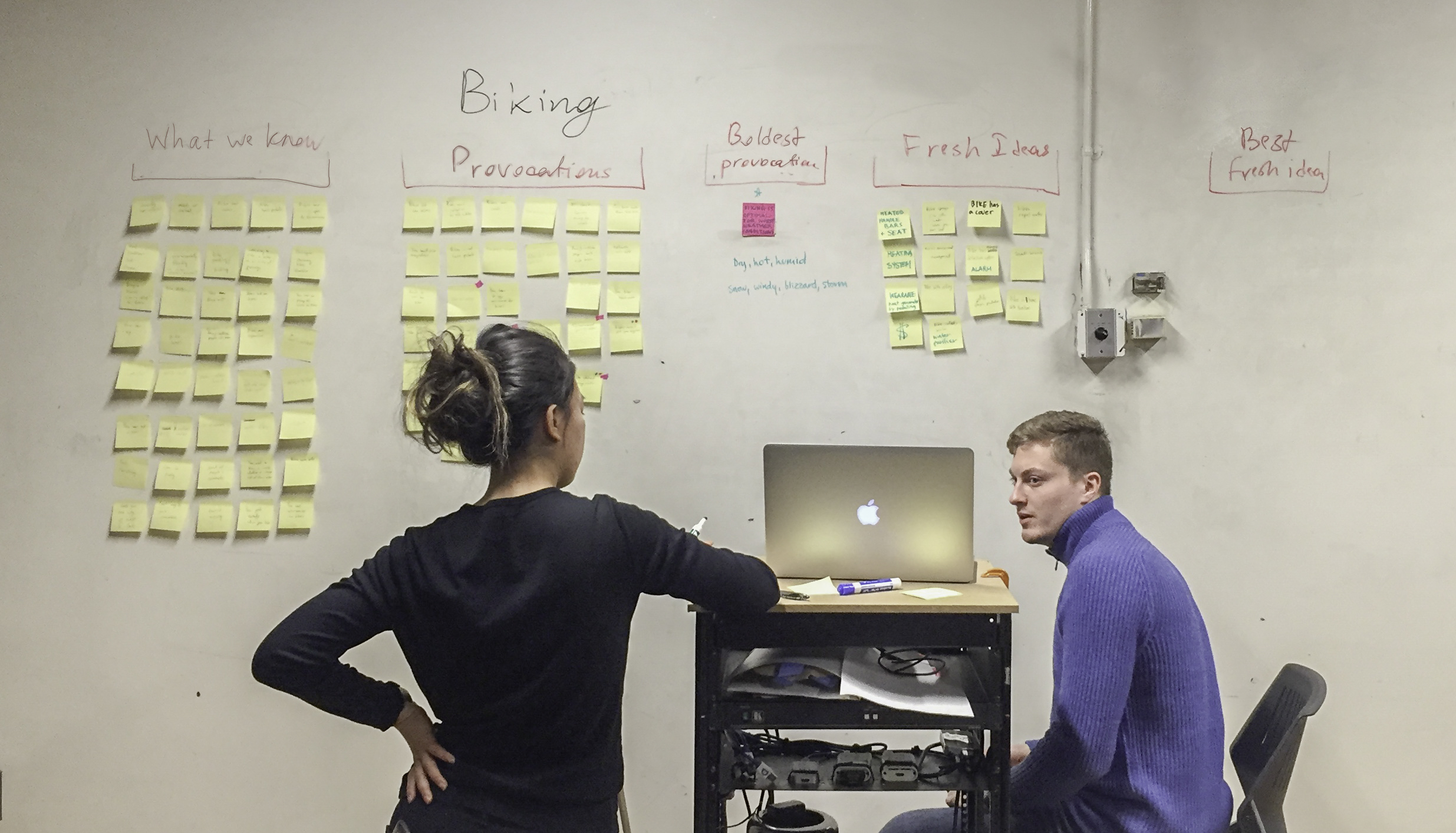
Qualitative Interviews
Conducting qualitative interviews with cyclists of different levels and empathizing with their needs/pain points helped us better understand the ecosystem of biking and get a clearer picture of the persona we wanted to design for.
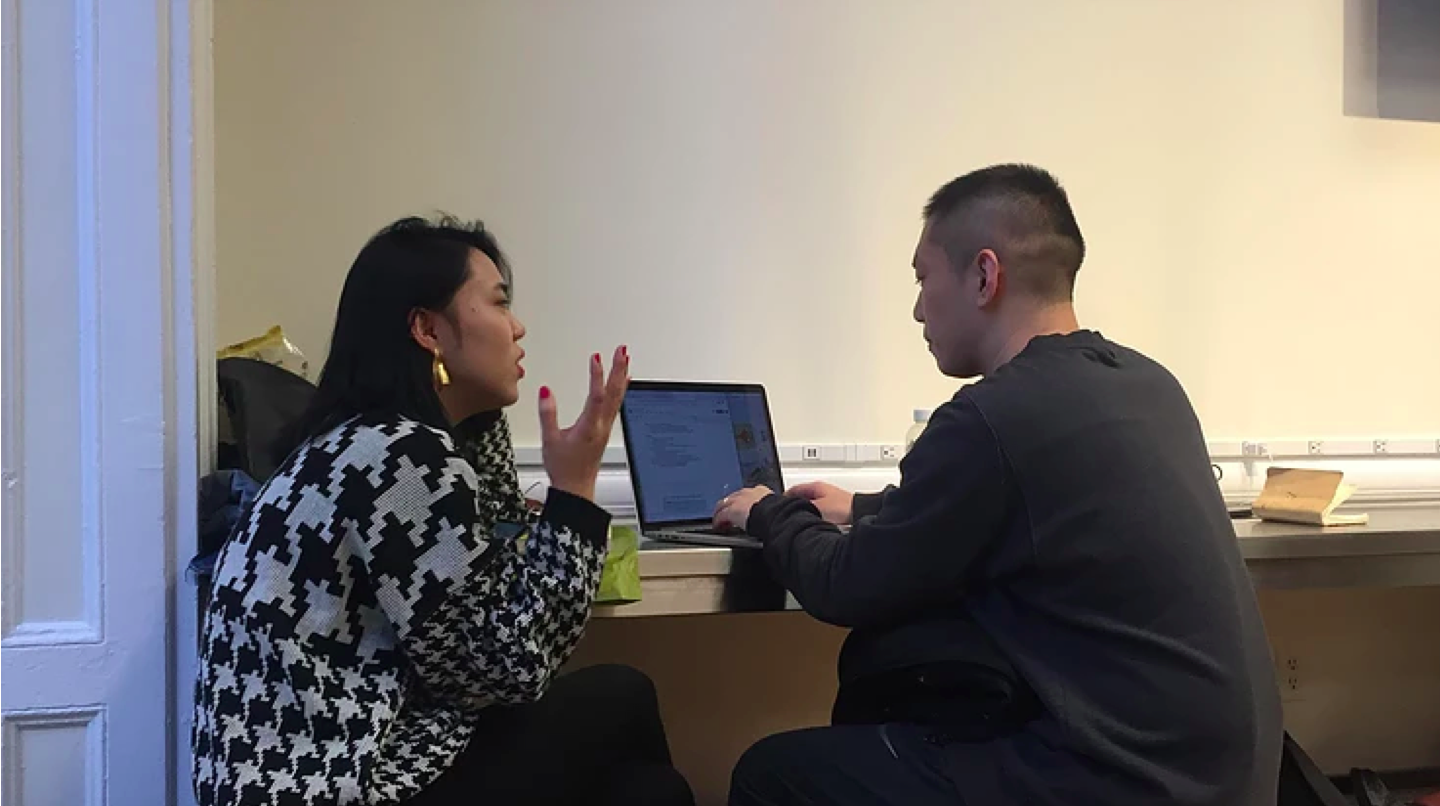
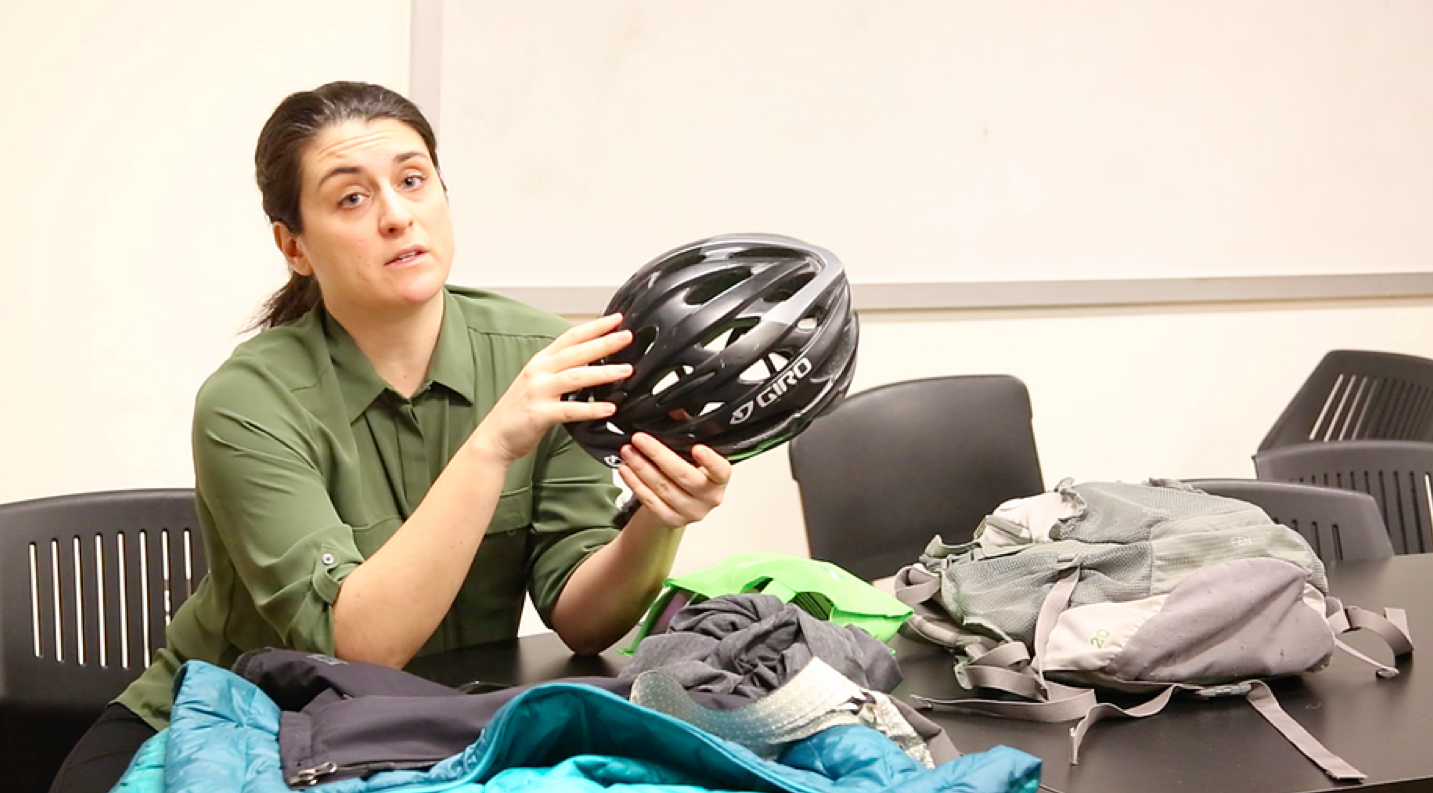
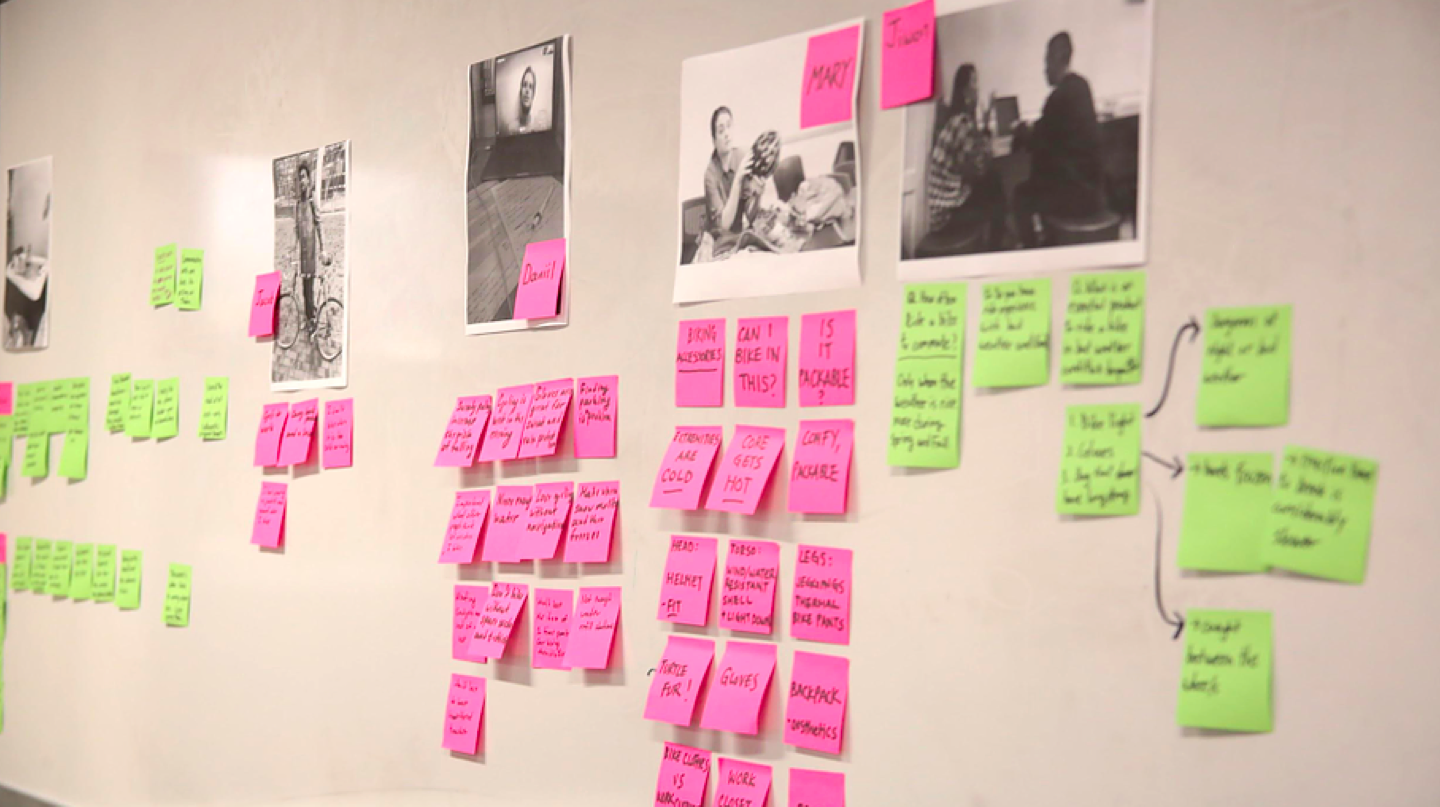
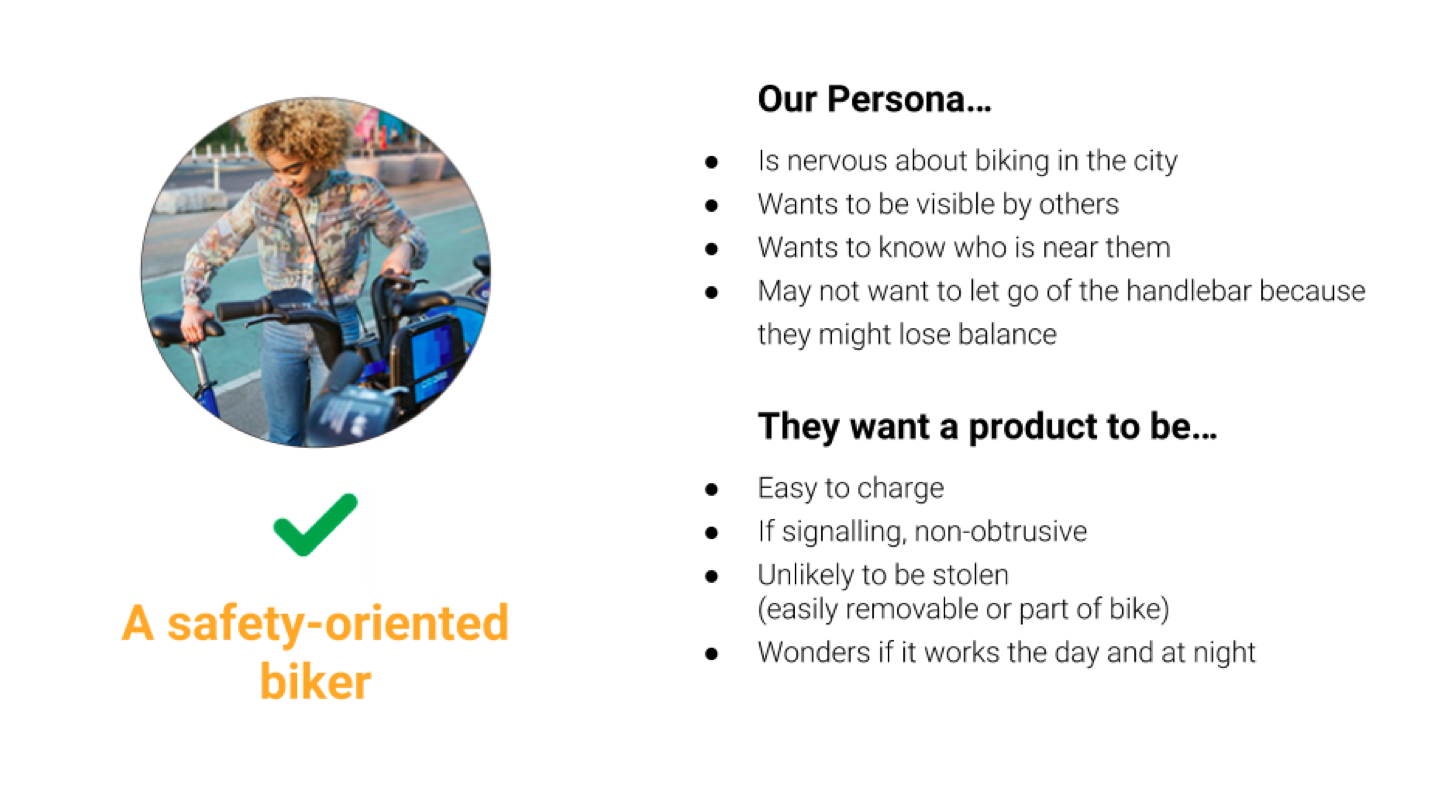
Opportunity
From our research, we learned that people limited how often they bike in the city (or avoided biking altogether) out of safety concerns. We saw this as an opportunity to thoughtfully consider,

Concept Ideation
As a group, we brainstormed ideas and storyboarded our top concepts to user test with people who fit our persona.
Storyboarding was a fast way to root out inconsistencies in our concepts, and get quick and honest feedback from our users.
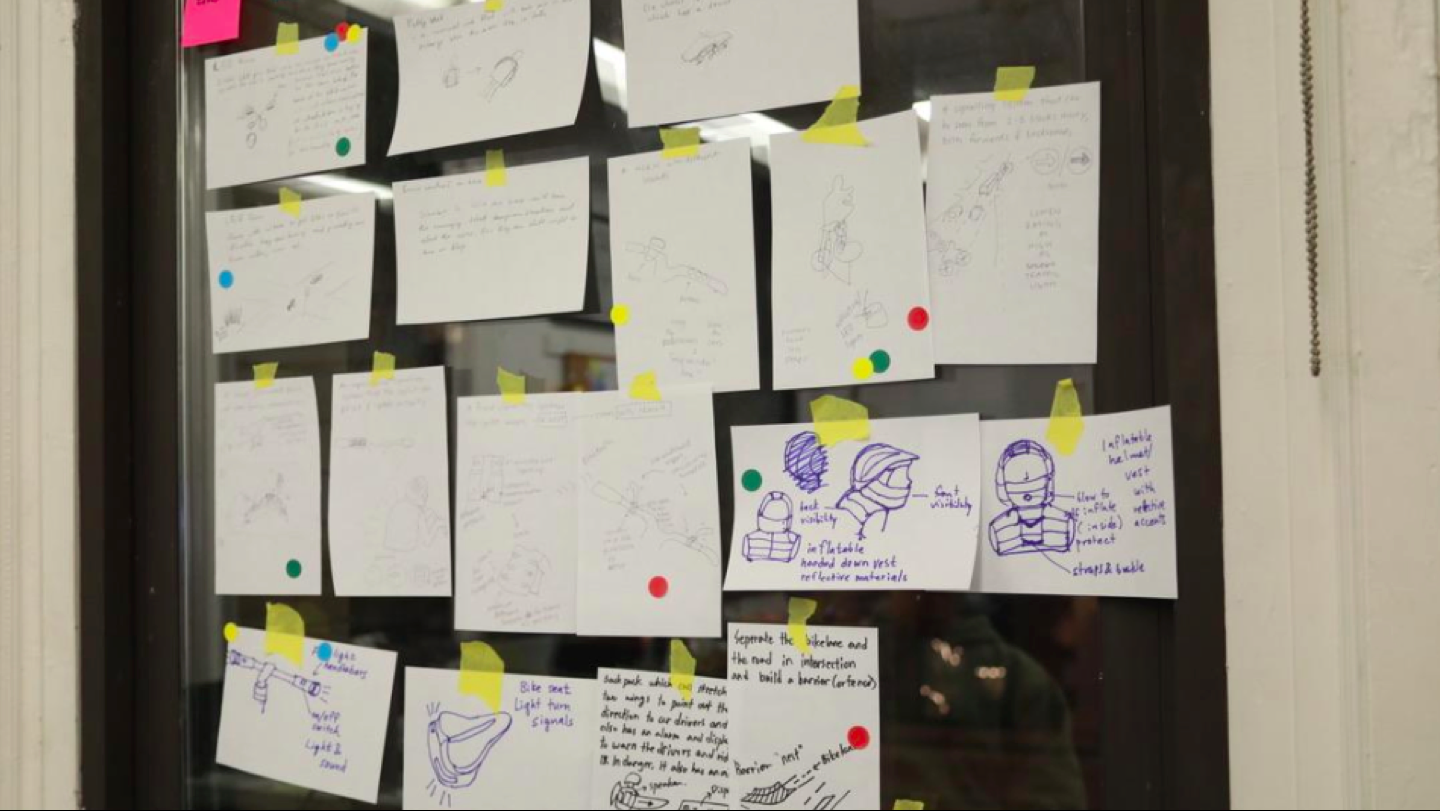

Eventually, we narrowed our ideas down to one.
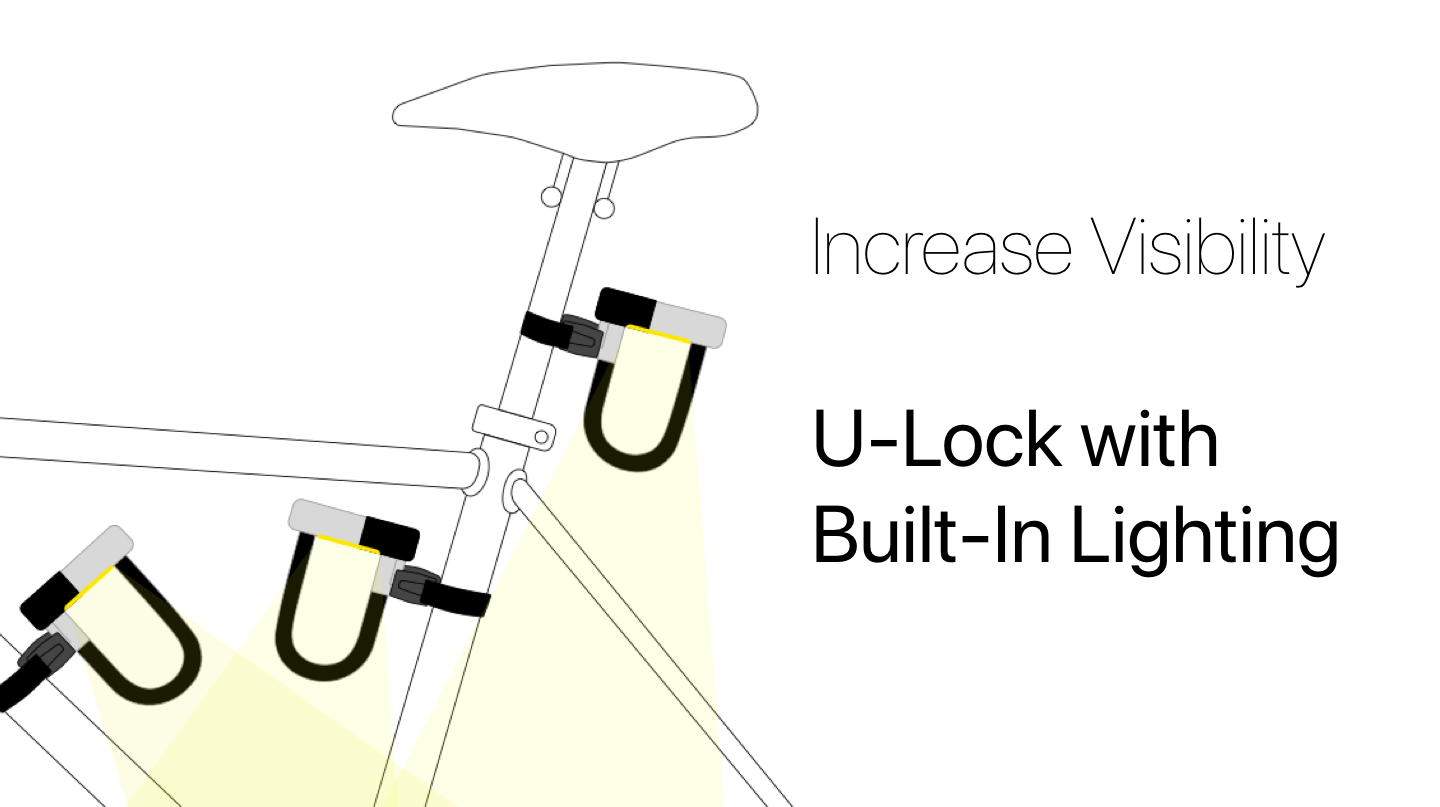
A bike lock with built-in lighting announces the presence of the cyclist to others. It satisfies values and needs we heard from cyclists during our research phase because the design replaces the need for extra lights (less gear is better, as they often get stolen), and configurable lights allow for any preferred lock mounting method (every cyclist has a different set up).
User Testing
To simulate the user experience, we taped flashlights to a bike lock to understand how light behaves in the dark when mounted to different parts on a bike.
Each team member created a low fidelity prototype to actualize our ideas for the design and user test with our peers.
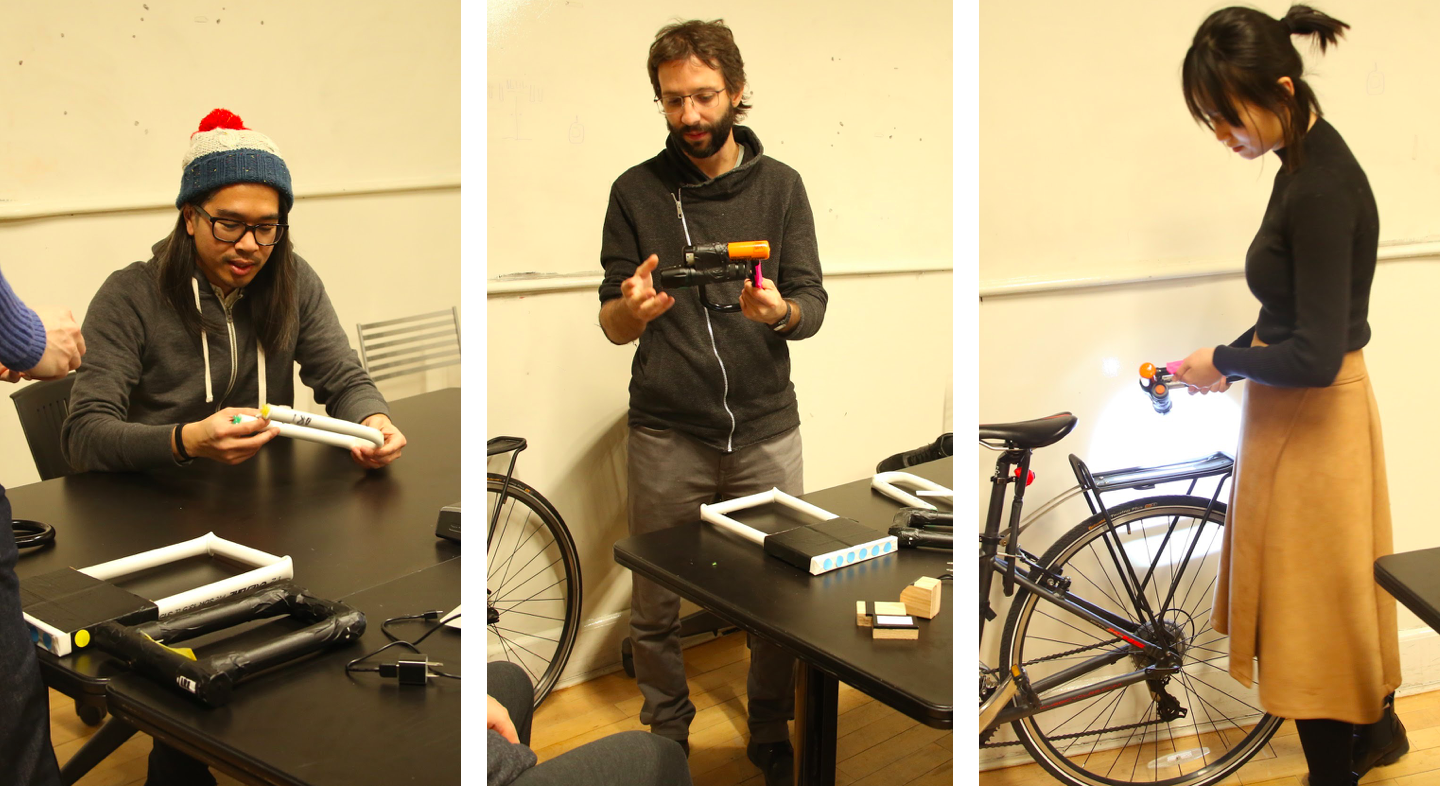
Our peers responded positively and provided us with valuable feedback for refining the design.
Build
We put our heads together to create a looks-like and works-like prototype for our final presentation held at Frog Design in New York.
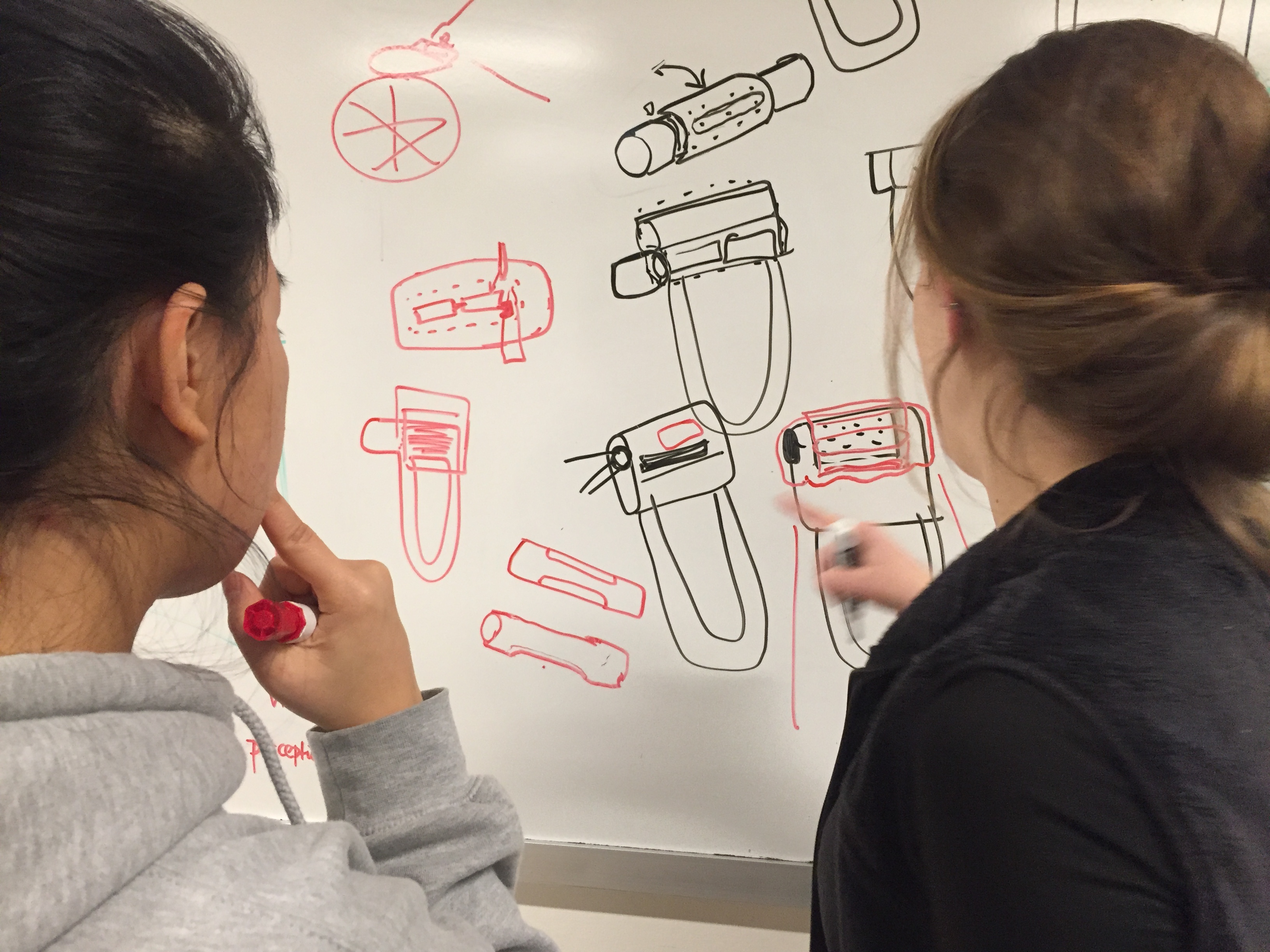
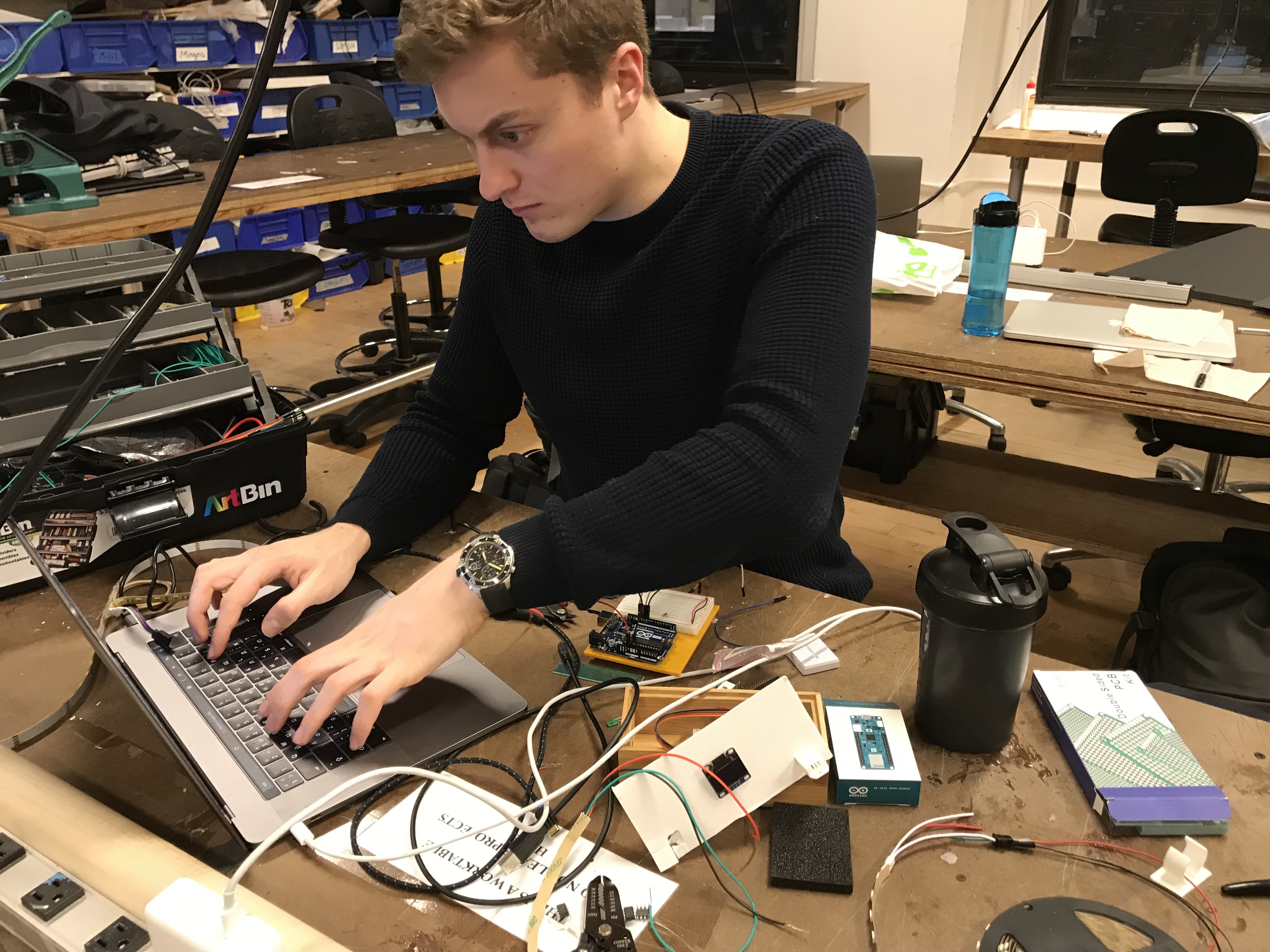
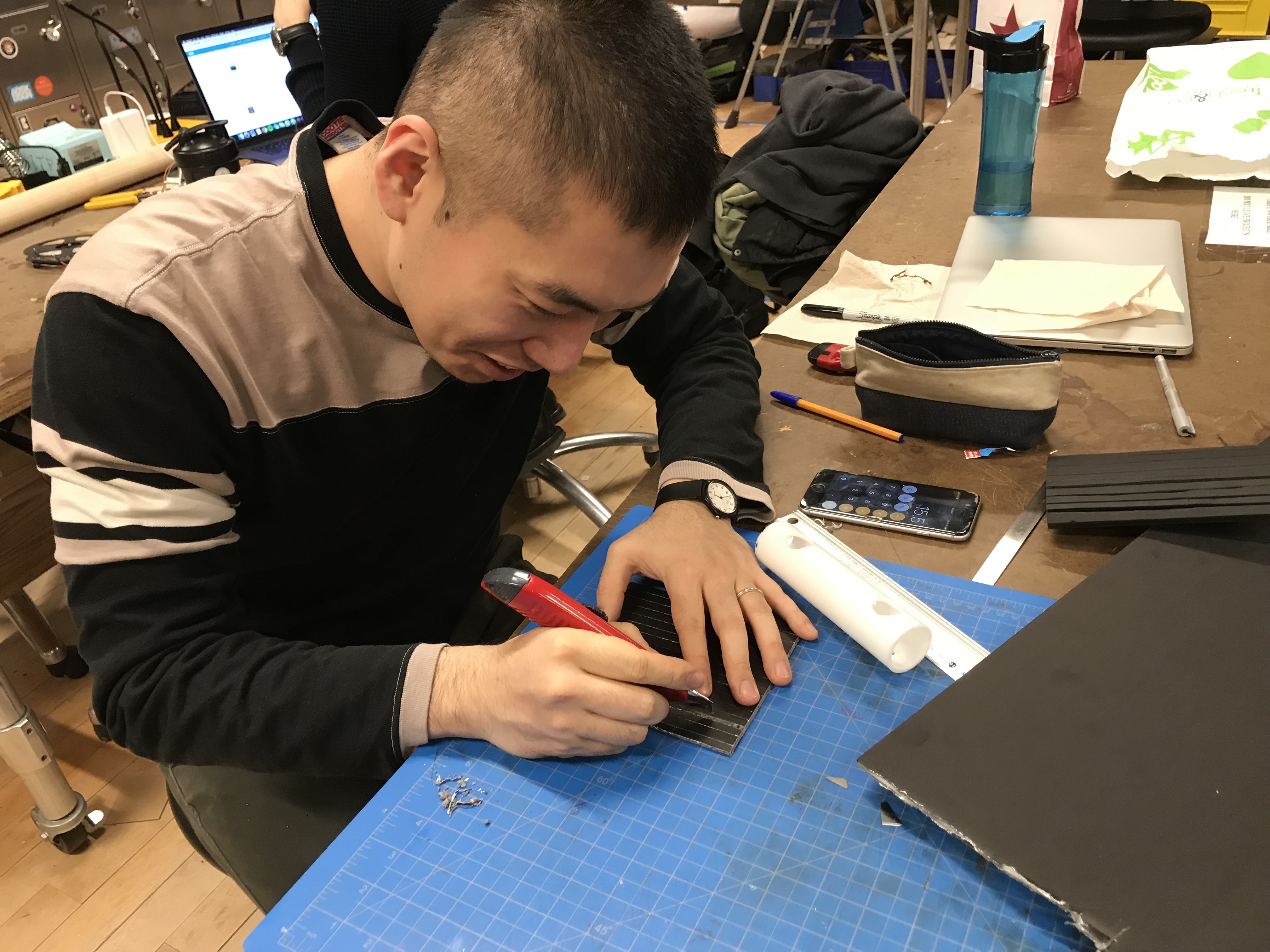
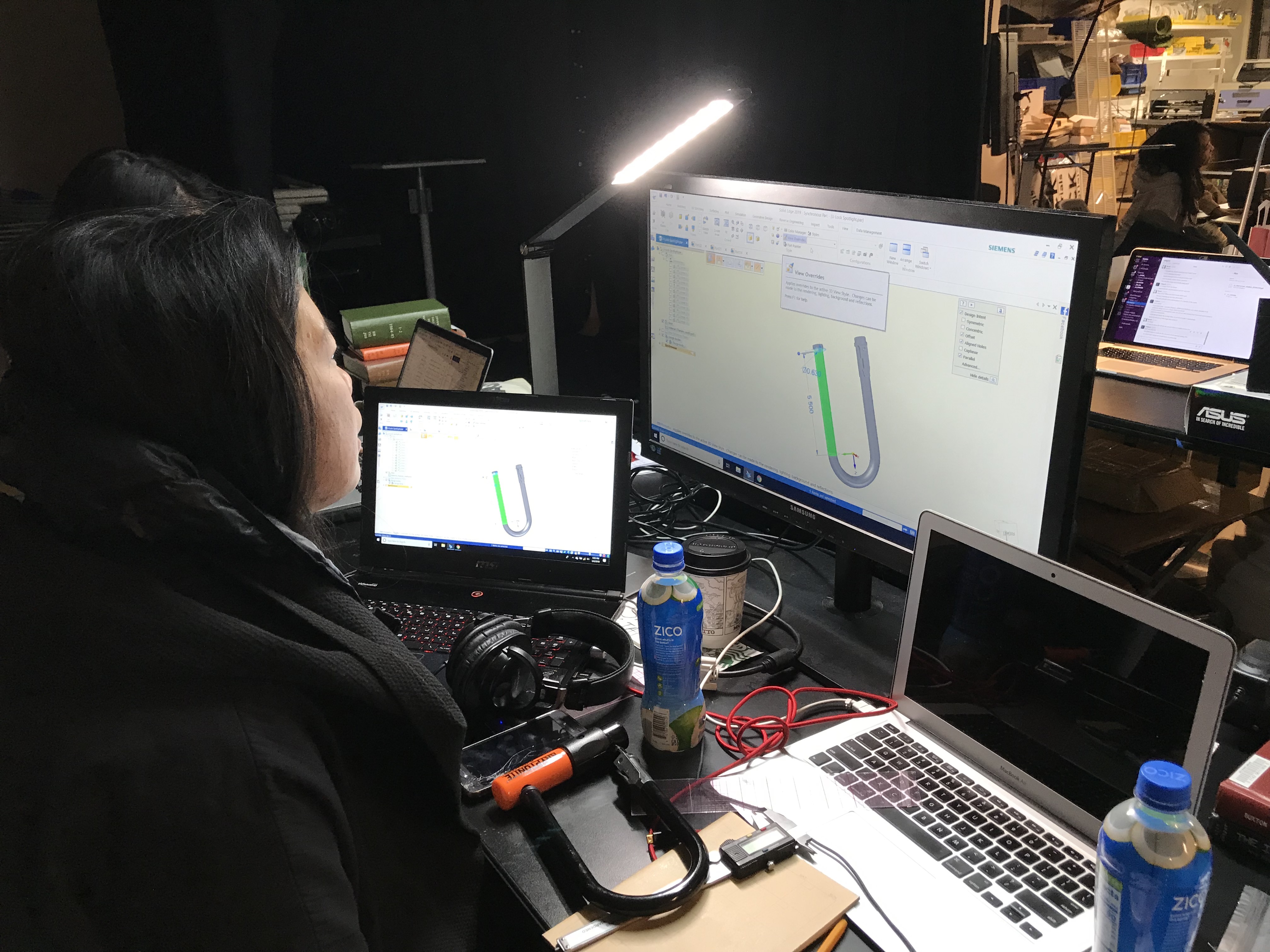
Final Prototypes

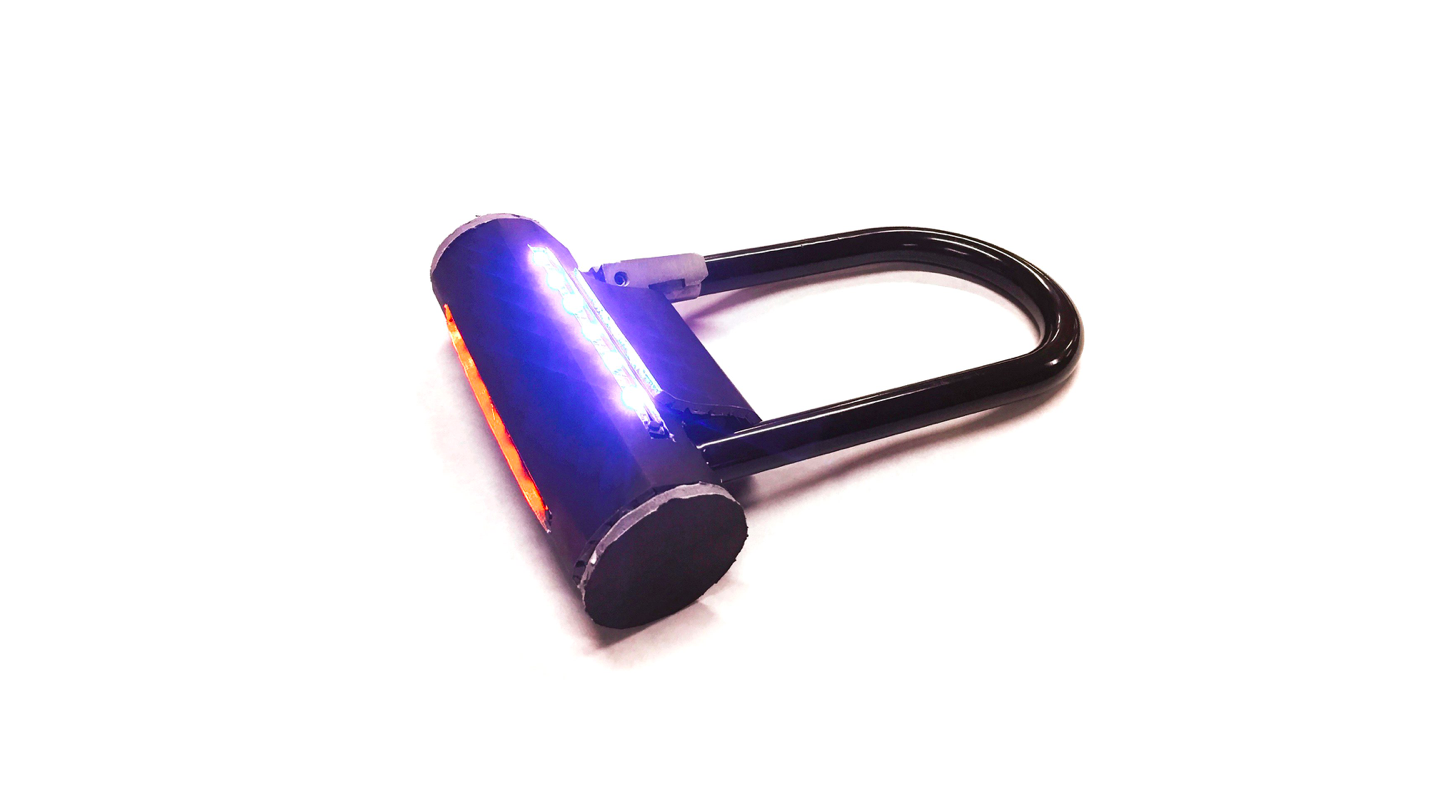
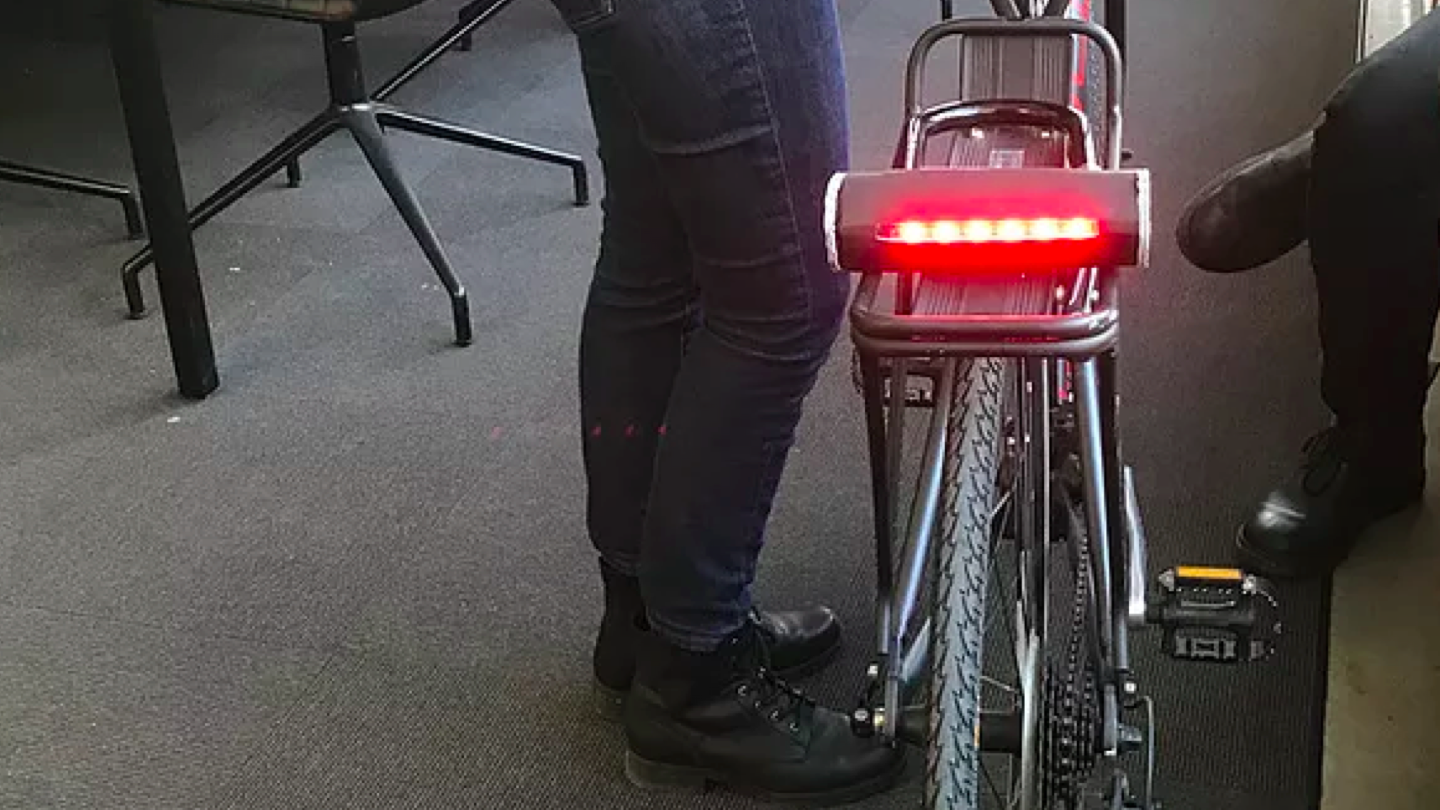
Product features:
- A classic U-Lock with the addition of four multi-purpose LED lights including taillight, headlight, and spotlights.
- All lights are controlled by a push button that toggles between the lights.
- The battery compartment is located between the U-shaped frame to protect from being accessed without unlocking.
- Versatile design accommodates different needs and styles of bicyclists without compromising the integrity of a reliable bike lock.